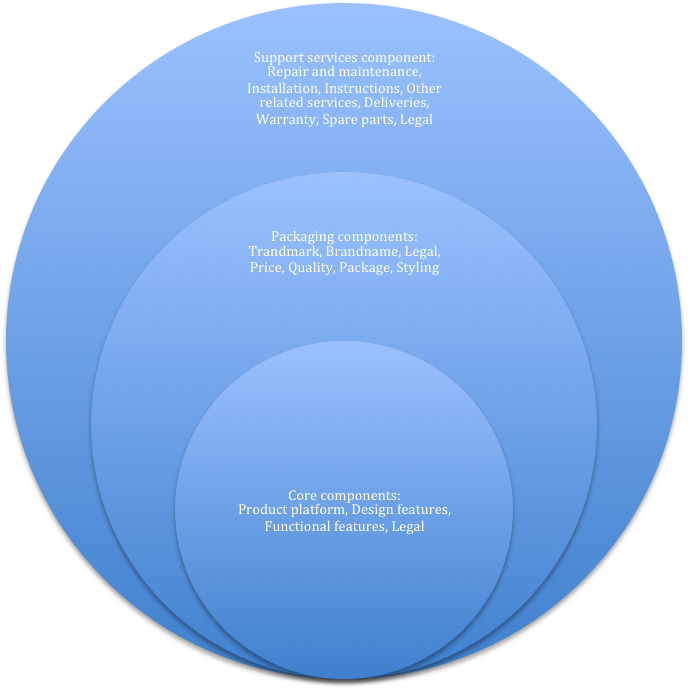
- •International Marketing 13 Developing Consumer Products for Global Markets
- •1) Define the following terms and show their significance to international marketing:
- •2) Debate the issue of global versus adapted products for the international marketer.
- •3) Define the country-of-origin effect and give examples.
- •5) Discuss product alternatives and the three marketing strategies: domestic market extension, multidomestic markets, and global market strategies.
- •6) Discuss the different promotional/product strategies available to an international marketer.
- •8) Product can be adapted physically and culturally for foreign markets. Discuss.
- •9) What are 3 major components of product? Discuss the importance of product adaptation. Смотрите рисунок на первой странице
- •10) How can knowledge of the diffusion of innovations help a product manager plan international investments?
- •14) Discuss the 4 types of innovations. Give examples of a product that would be considered by the us market as one type of innovation but a different type in another market. Support your choice.
- •15) Discuss the characteristics of an innovation that can account for differential diffusion rates.
- •16) Give an example of how a foreign marketer can use knowledge of the characteristics of innovation in product adaptation decisions.
- •17) Discuss “environmentally friendly” products and products development.
International Marketing 13 Developing Consumer Products for Global Markets
1) Define the following terms and show their significance to international marketing:
Product diffusion- the process by which innovations spread. Successful new product diffusion is dependent on the ability to communicate relevant product information and new product attributes.
Dynamically continuous innovation- it generally doesn’t involve new consumption pattern. It may mean the creation of new product or considerable alteration of an existing one designed to fulfill new needs arising from changes in life-styles or new expectations brought about by change.
Product Component Model- To identify all the possible ways a product may be adapted to a new market, it helps to separate its many dimensions into three distinct components

Global brands- worldwide use of a name, term, sign, symbol, design, or combination thereof intended to identify goods or services of one seller and to differentiate them from those of competitors.
Trialability- the degree of economic and/or social risk associated with product use.
Innovation- products new to a social system
Relative advantage-
Green dot- to stave off a multitude of individual country laws controlling solid waste disposal, the EC Commission has issued a global packaging directive. This law is considered weaker then the German law, but the limits of the law on total recovery of solid waste are seen as more workable than the German law and collection of sales packaging materials by retailers is not mandated. The law leaves rules on collection up to individual member states, so the German “green dot’ program is permissible.
Blue Angel- It’s a logo displayed on all products that comply with certain criteria that make it environmentally friendly.
Green marketing- is a term used to identify concern with the environmental consequences of a variety of marketing activities (German would create 12 different codes to control all kinds of packaging waste throughout the EC.
2) Debate the issue of global versus adapted products for the international marketer.
Global communication and other worldwide socializing forces have fostered a homogenization of tastes, needs, and values in a significant sector of the population across all cultures. This has resulted in a large global market with similar needs and wants that demands the same reasonably priced products of goods quality and reliability. Although recognizing some cultural variations, advocates of standardization believe that price, quality, and reliability will offset any differential advantages of a culturally adapted product. Product standardization leads to production economies and other savings that permit profits at prices that make a product attractive to the global market. Economies of production, better planning, more effective control, and better use of creative managerial personnel are the advantages of standardization. Such standardization can result in significant cost savings but it makes sense only when there is adequate demand for the standardized product.
Those who hold the opposing view stress that substantial cultural variation among countries dictates a need for differentiated products to accommodate the uniqueness of cultural norms and product use patterns.
The issue between these two extremes cannot be resolved with a simple either/or decision since the prudent position probably lies somewhere in the middle. The key issue is not whether to adapt or standardize, but how much adaptation is necessary and to what point a product can be standardized.
